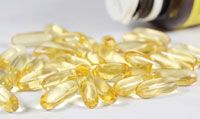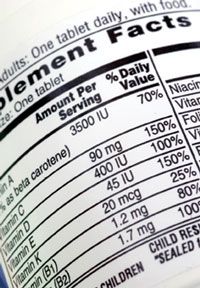The CGMP Regulation for Dietary Supplements: A Mandate for Quality

As regulatory consultants, we at AIBMR Life Sciences Inc. (Puyallup, WA) frequently hear the following statements from clients concerning the new good manufacturing practice (GMP) regulations for dietary supplements:
- "My products are manufactured in a GMP-certified facility, so I don't need to worry about compliance."
- "My company doesn't manufacture anything. We only sell finished products, so the rule doesn't apply to me."
- "My contract manufacturer supplies all the raw materials for my products, so it's up to them to ensure ingredient quality."
Each of the above statements is completely false. Current good manufacturing practice (CGMP) requirements apply not only to manufacturing facilities that produce dietary supplements, but also to the companies whose names appear on the product label. If you sell products under your own label and brand and are laboring under any of the illusions listed above, it's time for a serious wake-up call.
On June 25, 2007, the dietary supplement industry entered a long-awaited new era with FDA's issuance of the Final Rule on Current Good Manufacturing Practice for Dietary Supplements. This momentous event was long in coming: nearly 13 years had elapsed between publication of the rule and passage into law of the Dietary Supplement Health and Education Act (DSHEA) of 1994. DSHEA authorized FDA to promulgate CGMPs, but it did not, contrary to common belief, actually require them to do so. Nonetheless, the regulation is now in force. Dates are set for dietary supplement manufacturers and distributors, based on company size, to comply with the new rules.
GMP Compliance Deadlines
Companies with 500 or more full-time equivalent employees...........June 28, 2008
Companies with 20–499 full-time equivalent employees...................June 25, 2009
Companies with fewer than 20 full-time equivalent employees.........June 10, 2010
The first critical date has already come and gone: by June 28, 2008, companies with 500 or more full-time equivalent employees (FTEEs) were required to be in full compliance and are now subject to FDA inspection. FDA can declare noncompliant products made or sold by these companies to be adulterated, and thus illegal for sale.
The next compliance milestone is less than a year away: June 25, 2009, for companies with 20–499 FTEEs. The majority of dietary supplement firms belong to this group, which includes manufacturing companies and smaller firms that distribute products under their own labels. Companies within this second group commonly employ contractors to manufacture at least some, if not all, the SKUs in their product lines. The final date is June 10, 2010, for firms with fewer than 20 FTEEs.
Where does accountability rest when it comes to ensuring CGMP compliance of a dietary supplement sold via health food stores, supermarkets, the Internet, mail order, or multilevel distributors? It stops with the company whose name is on the label. That company is the "manufacturer" of the product, regardless of where the blending, packaging, and labeling take place. Such companies are referred to as brand manufacturers, label manufacturers, or label holders.
The new CGMP rule is more than a set of standards for manufacturing facilities. To be sure, much of the rule deals with manufacturing operations, covering key areas such as plant cleanliness; water supply quality; protection of raw materials and finished goods against contamination; equipment sanitation, maintenance, and performance verification; process controls; quality control sampling and testing; employee hygiene practices; and sample retention. Formal standard operating procedures (SOPs) must be written, followed, and documented for every lot of finished goods produced in the plant.
The CGMP rule is a mandate for product quality. CGMP compliance and quality assurance are inseparable. The rule formally defines the term quality for purposes of CGMP compliance: "Quality means that the dietary supplement consistently meets the established specifications for identity, purity, strength, composition, and limits on contaminants, and has been manufactured, packaged, labeled, and held under conditions to prevent adulteration under section 402(a)(1), (a)(2), (a)(3), and (a)(4) of the Federal Food, Drug, and Cosmetic Act."
A Quality Assurance Master Plan-The Key to CGMP
A robust program for complying with the new rule is tantamount to a quality assurance master plan. Take special note of the reference to "established specifications" in the regulatory definition of quality. A quality assurance master plan begins with written specifications for the finished dietary supplement product and everything that goes into it. Specifications-the foundation of product quality-are defined characteristics that, when met, ensure the identity, purity, strength, and composition of the dietary supplement. Producing a dietary supplement without specifications is like trying to build a house without a blueprint; what the end result will look like is anybody's guess.
Developing specifications is a product development activity that should take place during the formulation phase. The first step is to begin with the end in mind. Finished-product specifications include more than a mere list of ingredients at desired potencies. For example, if the product is a tablet, specifications must be defined for weight variation, disintegration time, hardness, thickness, and friability. Specifications that define tolerance limits for contaminants such as heavy metals, pesticide residues, and potentially harmful microorganisms are critically important. Analytical laboratory methods should be established for each specification, including methods used to assay the product for active-ingredient potency.

Manufacturing top-quality finished products is impossible without quality ingredients; otherwise you have garbage out from garbage in. This is a given that hardly needs repeating, but how do you guarantee ingredient quality without specifications?
The CGMP rule requires testing every lot of each active product ingredient for identity verification. Establishing identity specifications, along with analytical testing methods, is just the first task in developing raw material specifications. Complete specifications that ensure the purity, strength, and composition of the finished supplement must be established for all components, including nonactive ingredients such as binders and fillers, as well as for active ingredients.
Specifications, test methods, and tolerance limits must be in place for anything that may contaminate the raw material at any point along the supply chain. If the ingredient is processed with solvents, upper limits should be established for residues, sometimes referred to as organic volatile impurities (OVIs). Residual solvent specifications are frequently absent on raw-material certificates of analysis (C of As). Ignore this at peril to safety of the product-hazardous levels of toxic chemicals such as benzene may be present, unbeknownst to the manufacturer or the consumer.
A C of A must accompany each lot of raw material delivered to the manufacturing facility. The receiver of the raw material must have a detailed production specification sheet in hand before the material arrives in order to accurately authenticate the C of A. The material should be placed in quarantine, where it remains under lock and key until inspection and testing are performed to confirm that it conforms to the specifications outlined on the specification sheet. Only when this key step has been accomplished should the material be released for use in production.
The laboratory performing the quality control testing, whether an in-house lab or a third-party contract lab, must use methods that are appropriate for the particular ingredient. Suitable methods include those from compendia such as the USP monographs, methods validated by organizations such as AOAC International (Gaithersburg, MD), methods published in peer-reviewed journals, and in-house methods. In-house methods must undergo a formal validation process that verifies method accuracy, specificity, precision, detection and quantitation limits, linearity, range, and robustness.
As with all other CGMP requirements, it is up to the brand manufacturer to be certain that the methods used to analyze finished products, and the ingredients they contain, meet predetermined standards.
Documenting Product
Compliance, Lot-by-Lot
Complying with the CGMP rule is an ongoing process. It requires manufacturing a dietary supplement product in a CGMP-compliant facility, which means the physical plant and equipment must be suited for their intended purposes. Equipment must be properly installed, calibrated, and tested annually to verify performance.
As mentioned above, SOPs must be in place and supported by documentation in the form of log sheets and other records for every facet of the manufacturing plant operations. SOPs are the linchpin and operational foundation of GMP.
In order to manufacture finished-product lots that comply with CGMP-not some of the time, or most of the time, but every time-two key elements of GMP must be prepared: master manufacturing records (MMRs) and batch records. The final rule devotes an entire subpart to each.
The MMR is the recipe that contains all the information needed to blend, package, label, and test a finished-product batch. Key MMR components include the product master formula, a list of active ingredients and other components, blending instructions, the theoretical batch yield, the quality control sampling plan, packaging instructions, product label, and analytical testing protocols.
The batch record follows the MMR, providing documentation that the batch was in fact manufactured according to the prescribed specifications. When an FDA inspector asks for verification that a particular lot of finished goods sitting in your warehouse was manufactured according to CGMP, the batch record must be complete and available for review. If not, there is no way to document compliance for the lot-by law, the product can at that point be declared adulterated, and therefore illegal for placement into commerce.
GMP Compliance of Finished Products: Where Does the Buck Stop? Check the Product Label.
In summary, CGMP compliance requires uncompromising quality assurance on two levels: the manufacturing facility itself-its design, cleanliness, equipment, and operations-and unerring conformance to quality production standards, on a batch-by-batch basis.
As stated earlier, the final responsibility for ensuring CGMP compliance on both levels rests with the company whose product name appears on the label, not with the raw-material suppliers or the contract manufacturer.
Brand manufacturers, both large and small, are fully accountable to FDA and to their customers for the quality of their products. Isn't that the way it should be? Hasn't the dietary supplement industry endured enough loss of consumer confidence, skepticism among public officials, and pervasive doubt as to whether supplement products are even safe, let alone reliable, when it comes to giving consumers what the label says they are getting?
Affixing labels on products that are anything less than safe and authentic is not only unethical and unacceptable, it is simply poor business practice. Good manufacturing practice is good business practice. Quality assurance is the mandate and the CGMP final rule is the roadmap. Only those companies willing and able to follow it can hope to survive and prosper as this new era falls upon the dietary supplement industry.
Richard Conant is director of quality assurance services for AIBMR Life Sciences Inc., an industry-leading science and regulatory consulting firm located in Puyallup, WA. Alexander G. Schauss, PhD, is the president and CEO. Irfan Qureshi, ND, is vice president for technical and regulatory affairs. John R. Endres, ND, is the chief scientific officer. Bringing more than 25 years of regulatory and scientific experience to the nutraceutical industry, AIBMR Life Sciences offers GMP consulting services and audits from coast to coast. For more information, visit www.aibmr.com.
FDA revokes authorization to use Red No. 3 as a color additive in food or drugs
January 15th 2025FDA contends that the color additive is safe for humans but is legally obligated by the Delaney Clause of the FD&C act to revoke authorization as research shows the Red No. 3 induces cancer in rats.





